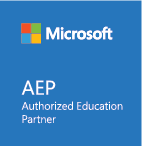How schools can stop buying stuff that sits on the shelf
- Apr
- 29

By Frederick Hess | Forbes
When assessing government funding for schools, the focus is usually “How much?” – with too little attention given to how effectively funds are being used. It’s time for a second look at how, when, and why schools buy what they do.
The question of how, when, and why schools buy stuff usually travels under the yawn-inducing label of “procurement,” and gets about as much attention as you’d expect. But this inattention has created huge problems, meaning that huge sums get wasted, educators get frustrated and schools have trouble getting their hands on goods and services that actually help.
Inattention has created huge problems, meaning that huge sums get wasted, educators get frustrated and schools have trouble getting their hands on goods and services that actually help.
Even as schools across the country spend billions each year on education technology, tech companies estimate that two-thirds of educational software licenses go unused. Some educators wind up relying on what they can assemble from Pinterest on a Sunday night. Why does this happen? And how can we do better? Here are three takeaways that can help address the disconnect.
School officials need to be clear as to how a new purchase actually helps teachers do their job.
An eternal complaint among educators is that schools waste money on ineffective programs and resources that they don’t want or need. Thomas Arnett, a one-time middle school math teacher and now a researcher at the Christensen Institute, explains that teachers view procurement as being more about creating new things to do than helping teachers accomplish tasks they’re already tackling.
If it’s not clear to teachers how a new purchase or program is going to help them do their job, they’ll (quite reasonably) stick with what they know.
If it’s not clear to teachers how a new purchase or program is going to help them do their job, they’ll (quite reasonably) stick with what they know. Decisions about outlays will be more likely to yield useful purchases if they start with a clear understanding of what teachers say they need to do their job.
Compliance concerns shouldn’t drive spending decisions.
Increased government funds could make a big difference for students, but experience teaches that they rarely do. In practice, concerns about spending restrictions, reporting requirements and government timelines mean that these pounds can wind up underwriting fragmented services, ineffective but familiar programs or faddish offerings.
As Junge and Krvaric explain, the complexity of government funding rules – and the risk-aversion of education officials – often lead to a reliance on programs that feel “safe,” including fragmented offerings that readily match government guidelines, familiar programs that don’t get audited or new offerings that enjoy a clear wink-wink endorsement.
Government officials could help by simplifying spending rules; in the meantime, schools need to more aggressively explore what’s allowed and resist the temptation to stick with what’s “safe” over what’s successful.
Education officials need to engage with vendors.
School systems are constantly inundated with vendor pitches. But experiences with vendors overpromising and under-delivering leave many school officials leery and inclined to keep them at arms-length. The ironic result, as former school HR administrator turned ed-tech CEO Lauren Dachille observes, is that when it comes time to buy new textbooks, assessments, information management or pretty much anything else, those making the purchase are frequently only familiar with what’s on offer from the vendors with the biggest and pushiest sales teams.
One consequence is that a given “request for proposals” (RFP) tends to include specific requirements that reflect the “features” list of well-known products, unintentionally excluding less familiar, more customisable, cheaper and (frequently more user-friendly) products of smaller or newer vendors. Rather than view vendors as an inconvenient blight, school officials should regard them as a resource and as potential partners.
Government funds are intended to help schools enhance learning, make schools safe and help students catch up. All of these require substantial outlays on technology, supplies and hardware. As school officials make these purchases, they have an obligation to ensure that they’ll actually be used and won’t languish on the shelf, like too many textbooks and technologies from days past.
This article was written by Frederick Hess from Forbes and was legally licensed through the Industry Dive publisher network. Please direct all licensing questions to legal@industrydive.com.






